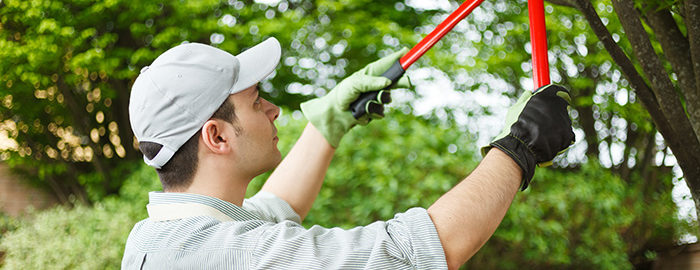Homeowners have the right to trim the trees and shrubs on their property—even if the foliage is growing in the neighbor’s yard.
Droopy branches, decaying limbs, and invading plants from the neighbor’s yard can make your well-maintained property look dark and overrun. Fortunately, there’s a practical solution.
In every U.S. state, homeowners have a common law right to prune the limbs, roots, and branches from a neighbor’s yard that intrude onto their property. That legal right is referred to as a self-help remedy, and allows property owners to take action rather than go to court.
Pruning is defined as the selective removal of plant parts to meet specific goals and objectives, such as removing branches that are diseased or broken, pose potential injury, or are blocking sunlight. However, this right doesn’t mean homeowners can wield an ax at everything they don’t like next door.
Here are some guidelines for prudent pruning to share with your clients so they can stay within their legal rights. To protect yourself from liability, remember to stress that you are not a landscaping expert or a lawyer—and never offer legal advice.
- Know the boundaries. Find the property boundary line on a surveyor’s map. One of these maps should have been made or provided to the owner at the last closing. Dig out the document and study it before starting. Look for the metal posts or rebar at the corners that correspond to the map.
- Stop at the line. Prune trees, shrubs, hedges, and plants that are encroaching from the neighbor’s yard, but stop at the boundary line. If your clients go past the line, they’re trespassing. Use proper pruning methods or contact a professional service.
- Don’t hurt the tree. Proper pruning should not harm the tree or cause portions of it to die. You can’t, for example, prune 90 percent of the tree—even if it’s all on your property—and expect the tree to survive. Most trees can handle reasonable pruning without difficulty.
- Anticipate potential problems. Tree problems are hard to predict. A weakened tree could come down in a breeze and cause enough damage to keep the house off the market. Before they take action, encourage your clients to find out whether there is a structural problem with the tree they want to prune. An arborist can help.
- Let the neighbor know. Any structural problem, such as a split in the trunk or dead limbs, can endanger your client’s property. If such a problem is suspected, the neighbors should be told immediately both verbally and in writing. Documenting this problem puts them on notice. Pictures, an arborist’s report, or a cost estimate for rectifying the problem can further document the situation. If damage or injury does occur, the neighbor could be liable for the repairs to property and medical bills.
- Clean up the debris. Clear away all of the leaves, sticks, and yard debris that come from the neighbors’ trees. If the debris is on your property, the neighbors are not responsible for cleaning these up.
It is always a helpful to practice good neighbor relations as you tidy up your yard. Chatting with neighbors and telling them about the need to clear up the yard as you prepare to list and sell your home might start a joint clean-up effort.
You can ask if the neighbors want to share a tree service that could come and prune both yards at one time. The mutual communication and cooperation with neighbors can pay off when the tidy landscaping increases the appeal of the home when it hits the market.
If you, or someone you know is considering Buying or Selling an Investment Property in Columbus, Ohio please give us a call and we’d be happy to assist you!
The Opland Group Specializes in Real Estate Sales, Luxury Home Sales, Short Sales in; Bexley 43209 Columbus 43201 43206 43214 43215 Delaware 43015 Downtown Dublin 43016 43017 Gahanna 43219 43230 Grandview Heights 43212 Galena 43021 Hilliard 43026 Lewis Center 43035 New Albany 43054 Pickerington 43147 Polaris Powell 43065 Upper Arlington 43220 43221 Westerville 43081 43082 Worthington 43235








